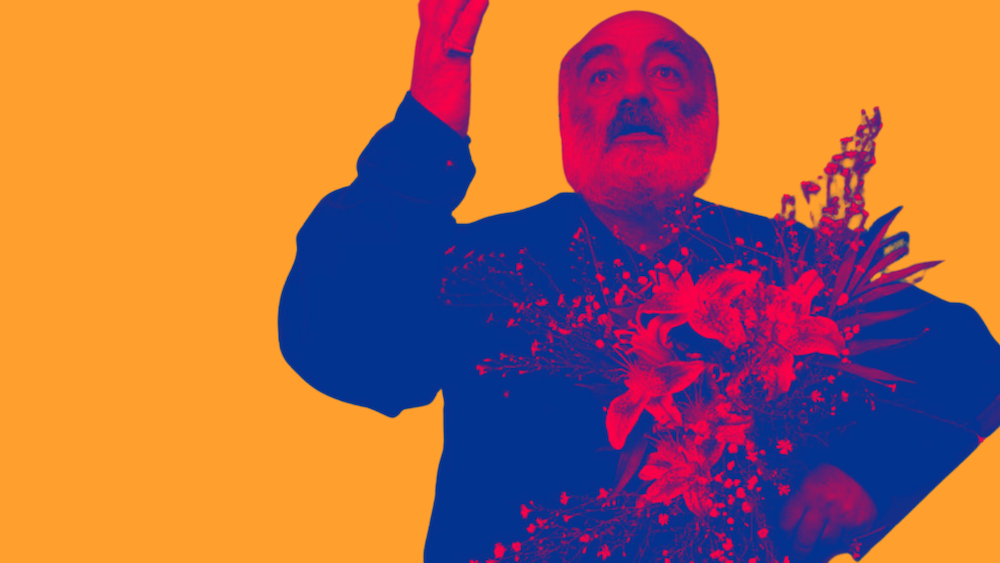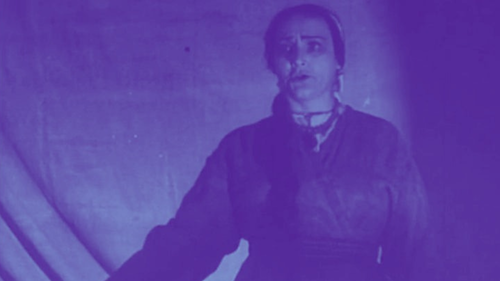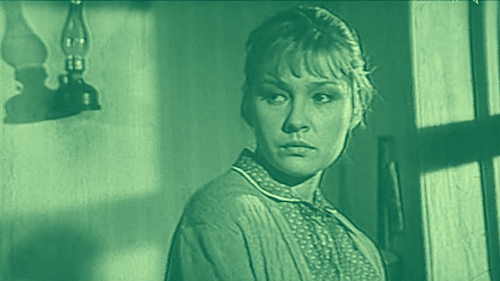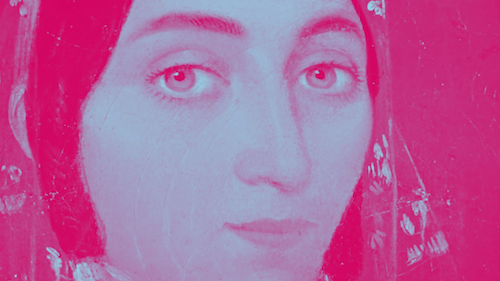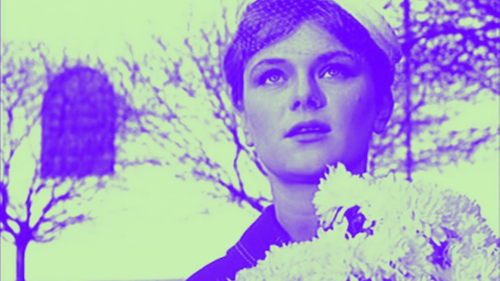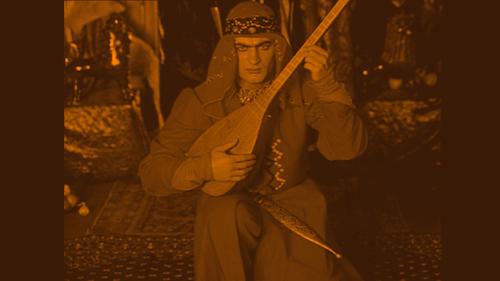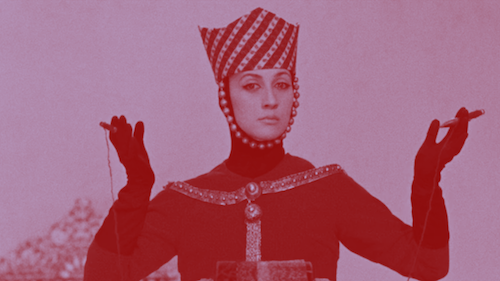Filmography Worship: Ranking Every Sergei Parajanov Film
Written by Andreas Babiolakis
Filmography Worship is a series where we review every single feature of filmmakers who have made our Wall of Directors (and other greats)
Today marks the one-hundredth birthday of the legendary director Sergei Parajanov, so it only makes sense to honour the late filmmaker by covering his entire filmography. Before we do so, it is crucial to go into his history and best understand the myriad of ways that he is influential and pivotal. The earliest Parajanov films are quite conventional, but that’s precisely the reason why no one thinks of them when they bring up the Armenian director’s filmography. Cinephiles instantly gravitated towards the films of his experimental period (from 1965 onward), where Parajanov rewrote the cinematic language by breaking the rules of narrative writing and creating iconographic art via abstract, statically shot sequences. Instead of seeing actions and events transpire, we’re graced with moving paintings that force us to interpret what is taking place. Without question, these four films alone make Parajanov one of the most challenging directors of all time. There hasn’t been a director before or after him that has pulled off the reinterpretation of what filmic art can be.
Sadly, Parajanov’s story is one full of turmoil. He was constantly attacked for his political views and for his bisexuality, down to being framed and imprisoned by the Soviet Union government (three times throughout his life, as a matter of fact). Some of his films were withheld from release or were outright banned; for instance, Kyiv Frescoes never saw the light of day, and only fifteen minutes of audition-related footage remain (I won’t include the footage in my list as it is unfinished, but I will include it here because even the glimpses of what could have been are transcendent). Parajanov’s first wife, Nigyar Kerimova, was murdered by her own family because she converted to Eastern Orthodox Christianity to marry him. Between all of the hardships of his life and his body breaking down in the harsh prison conditions, Sergei Parajanov passed away at the age of 66 on July 20th, 1990; he was midway through The Confession, which wound up being yet another film of his to not be finished.
His films were adored by many risk-taking filmmakers like Federico Fellini, Jean Luc-Godard, and Michelangelo Antonioni, but perhaps the most important fan in his life was his friend Andrei Tarkovsky, whose film, Ivan’s Childhood, which made Parajanov want to become a filmmaker and recreate the dreamlike quality of the Russian director’s debut. Parajanov’s final film, Ashik Kerib, would be dedicated to Tarkovsky, bringing his growth and artistic success as a visionary full circle. If Parajanov aspired to make similarly surreal films, then he succeeded far more than he perhaps ever realized. His greatest works feel like they are visions from another reality that are frozen in time and thawed by the magic and heat of a projector. It feels like Parajanov was robbed of many years of his life, and we were prevented from many more masterworks by a director who created cinematic brilliance unlike any other. His best films are culturally rich, stripped of any conventional practices (his most acclaimed works have minimal dialogue, for instance), and are in touch with religion and folklore to the point of becoming spiritual experiences themselves.
Before we get to the list, I’ll reemphasize that we are going to go through every existing, completed film of Parajanov’s career. This includes short films and documentaries. Additionally, Parajanov himself wrote off any of the films he made before 1965’s Shadows of Forgotten Ancestors (when his filmmaking style changed for good), so don’t be surprised by the order of the films presented below (in short, I think most hardcore cinephiles would agree with Parajanov’s views). His mind was so complex and his art so thorough. I can only hope to present his films with justice, but I also don’t think that is feasible. Nonetheless, here are the films of Sergei Parajanov ranked from worst to best.
13. The First Lad
Parajanov’s most conventional-feeling film is also easily his worst. A comedy about the rise of sports in a small village; from the construction of a stadium to the incorporation of football. This film has a handful of shots that look better orchestrated than your typical fifties European comedy film, but otherwise, The First Lad is a forgettable bore (yes, even with all of its chipperness). No matter what you know the film as (it’s also released as The Top Guy, and in both its Russian and Ukrainian titles), this has to be the least impressionable film Parajanov ever made. It isn’t worth discussing more than I already have.
12. Natalya UshviY
Parajanov’s last film of the fifties was this documentary on Ukrainian actor Natalya Uzhivy (who would actually star in a later film of Parajanov’s: Ukrainian Rhapsody). The documentary, named after its focal point, contains footage of her in action, and these points alone — while noble — feel like time away from what Parajanov could bring to the table. Otherwise, it’s a standard documentary featurette that gives a forgotten star the spotlight for a little bit. I feel like there are films that exemplify his artistry far better, but Natalya Uzhivy is a decent documentary if you are interested enough to watch it.
11. Flower on the Stone
Of the films on this list, Flower on the Stone feels the least like a Parajanov film, and there’s good reason as to why. Originally a film by Anatoly Slesarenko under the title Thus Nobody Loved, he was convicted when one of the actors, Inna Burduchenko, died mid-production. Thus, Parajanov was brought on board to finish this blue-collared drama that focuses on different political and religious viewpoints in a mining town. This film isn’t strong by any means, but you can sense a bit of Parajanov’s attempts to make something out of nothing here with the occasional strongly composed shot. Otherwise, Flower on the Stone is another passable Parajanov film, although it isn’t outright terrible.
10. AndriEsh
We can’t watch Parajanov’s actual first film (his graduate short film, Moldavian Tale) as it is lost, but we do have access to his first official feature film; thankfully, Andriesh is a retelling of this short. Co-directed with Yakov Bazelyan (so another instance where we don’t get a fully Parajanovian picture), Andriesh at least feels like the starting point of where the best years of Parajanov would stem from. A folklore film infused with fantasy images and mythological ambition, Andriesh is perhaps far from perfect but it is still a worthwhile effort by a rising filmmaker. I’d recommend this film to hardcore Parajanov enthusiasts (although this would be the only of his early feature films that I would suggest). It’s still quite conventional by his standards, but Andriesh has a spark within it that is noticeable.
9. Dumka
I’d call Dumka a weaker Parajanov short, and in ways, it’s worse than Andriesh, but I am ranking it a bit higher for a couple of reasons. Firstly, this is at least a film that is fully under Parajanov’s name alone (even though there was clearly control by the State here). Secondly, there’s something about how he frames the Ukranian State Choir that feels like a hint of what was to come from Parajanov: still images where the soul and faith within the frame radiate off the screen (as well as heavy incorporations of music). Another film that I’d only recommend to the biggest Parajanov fans, but I also think I appreciated Dumka more than the typical response I’ve seen online.
8. Hakob Hovnatanian
Now we start getting to the good stuff: the films that feel authentically like the Parajanov that has been championed throughout film history. His documentary short (and I do mean short: this is just over ten minutes long), Hakob Hovnatanyan, focuses on the Armenian painter of the same name and Tbilisi and East Georgian culture. There’s something about how Parajanov shoots still images (literally paintings in this case) that captures the essence of being in the same room as these artworks. I cannot describe the mesmerizing hold this short had on me in its incredibly brief runtime; it’s a documentary that allows you to feel like Parajanov himself in the presence of greatness. I do rank this film a little low because it is as short as it is, but it is still effective.
7. Golden Hands
I hope Parajanov won’t mind, but I’m about to champion two of his earlier works that he scoffed at. First off is the documentary featurette Golden Hands (also known as Zolotye ruki), which is a beautiful observation of Ukrainian artisans and their handcrafts (hence the name). While quite a traditional documentary down to the voice-over narration, Golden Hands has some creative cinematography going on; I particularly love this one shot where figures are made, put into a stove, and taken out once refined; the figures don’t seem to “move”, so they stay fixed in place despite these steps, and I’m not sure how the shot was achieved so smoothly. While clearly a piece of propagandistic filmmaking, Golden Hands is still a pretty film with something to prove.
6. Ukrainian Rhapsody
The best film Parajanov made before he dipped into the world of avant-garde for good and his strongest example of social realism is Ukrainian Rhapsody. As we see two souls separated by war (a singer and her partner), we see a relationship — and a country — trying to mend themselves amidst adversity. A spiritual awakening within melodrama, Ukrainian Rhapsody may be a part of the “forbidden” years of Parajanov’s work, but I also think it is under-seen and under-loved. I won’t pretend that it’s as strong as his multiple masterpieces, but I do think that there may be a stigma surrounding this film; it may be quite ordinary for Parajanov, but it is still quite a strong release that proves that Parajanov could have made a great conventional film whenever he wanted; he just strived for greater artistry.
5. Arabesques on the Pirosmani Theme
From this point on in the list, I’ll be talking about the Parajanov films I consider masterful and one short falls under this designation. Hakob Hovnatanian walked so Arabesques on the Pirosmani Theme could run. Another documentary short about an artist (here, it’s Georgian painter Niko Pirosmani), this time the art comes to life via Parajanov’s signature use of tableaux mise-en-scène. For twenty minutes (a runtime that actually feels long enough), Parajanov places you not just in the art gallery but within the artwork itself, transfixing you via a religious epiphany. If you don’t feel prepared to take on Parajanov’s most experimental feature films, maybe Arabesques on the Pirosmani Theme can be your gateway to these works; it’s short enough to try and see how you manage.
4. Ashik Kerib
The next two films were co-directed by actor Dodo Abashidze (who worked with Parajanov in his latter years). Parajanov’s final (finished) film is such a peculiar amalgamation of ideas. While as experimental as he ever got, he seemingly was inspired to try and make an arthouse film for younger audiences by extrapolating the visual style of dramaturgy (it almost seems like we’re watching a living, cinematic puppet or costume show). Based on Azerbaijani music and culture, we follow an ashik during his fall and rise via an extreme fable full of humourous self-awareness (comedy does feel a bit strange in a Parajanov art film, but it works well here). I also love the anachronistic ways that this film breaks itself, from the replacement of a body that is getting decapitated (with ribbon “blood” spilling out) to the shot of the camera that concludes the film, turning the gaze back on us. I don’t think Ashik Kerib should be your first Parajanov because of its cheeky side (it may get in the way of what you think his artistic intentions are), but it is a must if you like his other opuses.
3. The Legend of Suram Fortress
Fifteen years after his previous film, The Color of Pomegranates, Parajanov’s magnificent The Legend of Suram Fortress picked up right where he left off; after four years of wrongful imprisonment, and an additional ten-or-so years before he could get this film to be produced. It’s a jaw-dropping, minimalist look at writer Daniel Chokadze’s iconic folk tale that hops from tableaux to tableaux. These images depict a boy’s birth, life, and quest to save his country. While a little more upfront than The Color of Pomegranates, The Legend of Suram Fortress is still a visual feast that implores you to make sense of what you are seeing on screen, thus acquainting you with Georgian culture and literature. The end result is a vivid hallucination of a fable that immerses you in its artistic brilliance. It is one of the finest art films of its decade, and a must for any cinephile that is looking for underrated, challenging works.
2. Shadows of Forgotten Ancestors
One of the greatest Ukrainian films of all time, Shadows of Forgotten Ancestors is the turning point in Parajanov’s career where he went from traditional films to avant-garde masterworks. This is more coherent than the film that would follow (more on that shortly), but Shadows of Forgotten Ancestors is still an artistic excursion into what feels like the afterlife: a purgatorial recounting of Ukrainian philosophy and history in the Carpathians. Here’s a film made by a starving director who wanted to finally break free of political, filmic, and personal restraints. We get an exploration of self within allegorical, visual splendour: a spiritual conquest that elevates any viewer in a way they didn’t think was possible (even the atheists out there). Shadows of Forgotten Ancestors is rich in faith, grief, and exaltation.
1. The Color of Pomegranates
Here it is: one of the greatest achievements in film history (and also one of the most challenging films you may ever watch). The Color of Pomegranates is unlike any film I’ve ever seen (yes, even alongside the other Parajanov art films): a cryptic Soviet-Armenian “biopic” (only in the absolute loosest sense) of ashug Sayat-Nova via visual poetry, filmic Persian miniatures, and moving iconography (to capture the religious troubadour’s faith in Armenian Christianity). Driven by androgyny, spiritual sacrifices, and symbolism upon symbolism, The Color of Pomegranates is a film experience that reveals more and more story elements (either intentionally or interpreted by you, given the extremely metaphysical nature of the film) each time you watch it. A complete dismantling of the cinematic language via tableaux, next-to-zero dialogue, and indecipherable (to most), religious allegories, The Color of Pomegranates is an absolute masterpiece of cinema. It is one of the best-directed visions in all of film, and an idiosyncratic opus that has never been reached by any other filmmakers since. It is Sergei Parajanov’s greatest film and a slice of avant-garde genius unlike any other.
Andreas Babiolakis has a Masters degree in Film and Photography Preservation and Collections Management from Ryerson University, as well as a Bachelors degree in Cinema Studies from York University. His favourite times of year are the Criterion Collection flash sales and the annual Toronto International Film Festival.

